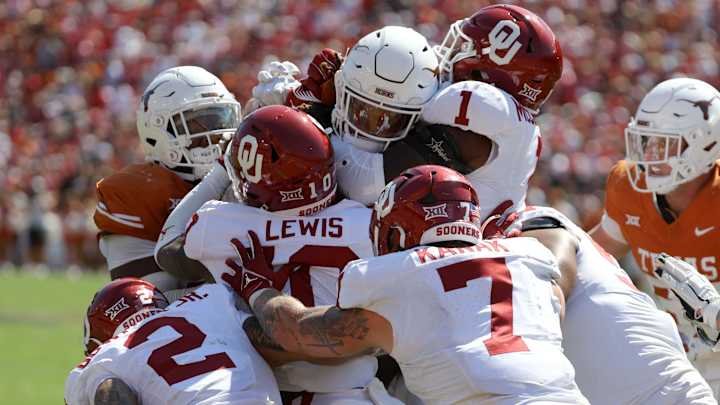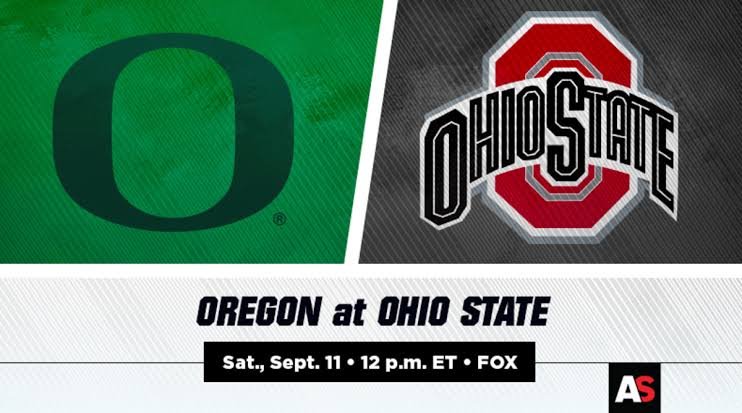The Business of College Football Revenue, Sponsorships and TV Deals
The Money Behind College Sports
College sports involve a lot of money moving around. It starts with student athletes, who play for their schools under specific rules. The schools make money from things like tickets, merchandise, and donations. They’re also part of conferences, which earn money from TV deals and tournaments, and then share it with the schools. The NCAA oversees everything, making rules and earning money from big tournaments, which it gives back to the schools. Bowl games and tournaments also make money and share it with the schools and conferences. But the real big shots in the business are the TV ad networks, who pay huge amounts to show college sports on TV.
How much money does college sports generate?
Based on data obtained through non-profit Form 990 tax returns, college athletics earned approximately $13.6 billion in total revenue in 2022 through its myriad of entities. While this figure pales in comparison to an estimated $46 billion generated by the four major U.S. professional sports, individually, it outstrips Major League Baseball ($10.9 billion), the National Basketball Association ($9.9 billion), and the National Hockey League ($6 billion).
TV Broadcast Rights Dominate Revenues
The largest single source of revenue for college sports has become television broadcast rights. In 2022, $4.2 billion, or approximately 31%, of revenues flowed from TV rights through all layers of the system.
The value of television dollars and the percentage of revenues it accounts for has grown significantly since the late 2000s. For example, only about 21% ($1.4 billion) of the $6.7 billion in total college sports revenue in 2009 was from TV rights.
To underscore the significance of TV revenue, roughly 77% of the NCAA’s $1.22 billion in revenues and nearly two-thirds of the Power 5 Conference (ACC, Big-10, Big-12, Pac-12, and SEC) revenues were from TV rights in 2022.
The five largest conferences, known as the Power 5 Conferences, expect renewed TV contract revenue in 2024 and 2025. The soon-to-be-negotiated television contract from the expanded College Football Playoffs is also expected to increase revenues in 2026. The impact of these new contracts is expected to increase TV revenues significantly over the next several years. The rapid rise in TV dollars compared to slower-growing traditional revenues, has made TV dollars the growth differentiator for athletic programs.
Reduced Impact of NCAA
The NCAA, a non-profit entity, regulates amateur sports competition for its 1,100 member schools in the United States, categorized into Divisions I, II and III, based on size and financial resources, with Division I including the largest athletic programs. The NCAA is governed by committees made up of volunteers from member schools who manage topics affecting sports rules, championships, health and safety, matters impacting women in athletics and opportunities for minorities. Many of the NCAA rules focus on amateurism, a concept that restricts student athletes from earning compensation for participating in sports.
While the NCAA regulates athlete participation in sports for its member schools, it does not control the athletic conferences, or post-season football games, and has no control over conference television contracts. In essence, the NCAA does not regulate most of the money flow of college sports.
Originally, the NCAA controlled the television deals and appearances for each school. Big football schools wanted freedom to broadcast their games on major television networks, which led to lawsuits between major college football schools and the NCAA. In June 1984, a tectonic shift in college sports occurred when the Supreme Court ruled in NCAA v. Board of Regents (of the University of Oklahoma) that the NCAA’s control of television deals represented a restraint of trade. This landmark decision ushered in a free market system for revenue generation, in lieu of an NCAA-regulated system. Subsequently, the Bowl Championship Series and the College Football Playoff (“CFP”) led to large television deals for post season competition. The Big-10 Conference formed its own television network in 2007 and most major conferences followed their lead over the next decade.
The NCAA managed to retain media rights to basketball’s March Madness tournament and as a result, the majority of the NCAA’s revenues are derived from this highly popular basketball championship tournament. The NCAA generated a record $1.22 billion of revenue in 2022 and more than 93% of that came from March Madness ticket sales, merchandise and television broadcast rights. CBS and Turner Sports will pay the NCAA up to $19.6 billion over a 22-year contract term. If one were to define the modern NCAA by its revenue sources, it would be described as a basketball tournament organization.
The NCAA distributes its revenues to member schools after paying its operating expenses, with $682 million going to member schools in 2022.
Athletic Conferences Hold Significant Financial Power
After the 1984 Supreme Court Decision, conferences stepped into the position of negotiating television rights on behalf of their member schools. Collegiate athletic conferences, non-profit organizations comprised of 8-16 member schools, are governed by boards made up of university presidents responsible for budgeting, hiring conference commissioners, enforcing rules, and admitting new schools. Conference commissioners manage the day-to-day operations and hold significant sway over shaping revenue for the conferences, given that university presidents often lack experience in sports business matters.
Conferences Generate Revenue, Allocate Funds to Member Schools
Conferences amass revenues from television contracts, sponsorship deals, and ticket sales, distributing a substantial portion to member schools. The Power 5 Conferences, the most prominent in NCAA Division I college football, gained a unique status of additional autonomy from NCAA rules in 2014. The Power 5 conferences generated substantial revenue in 2022 and distributed to member schools as follows:
We note that the Pac-12 Conference’s 2022 operating expenses equaled 20.4% of revenue compared to an average of 6.7% of revenue for the other four major conferences. A key difference in spending was on salaries, compensation, and benefits, in which the Pac-12 Conference spent $36.6 million in 2022, or 6.3% of revenue, while the other four major conferences spent an average of $11.5 million, or 1.7% of revenue. This overspending by the Pac-12 Conference, which resulted in less money being distributed to the member schools, may have also contributed to the demise of the conference.
Pac-12 Faces Instability Amid Uncertainty Surrounding TV Deal
In 2022, facing expiration of its 12-year, $3 billion television rights contract in 2024, the Pac-12 Conference unsuccessfully sought a new television rights contract with ESPN and Fox but ultimately ended up with a riskier proposal from Apple TV. As a result of the television revenue uncertainty and the need to address losses incurred during the Covid-19 shutdowns, UCLA and USC announced their departure from the Pac-12 conference in 2022. This event triggered a domino effect with other Pac-12 schools accepting invitations to join other conferences in 2023, except for Oregon State and Washington State who are now the lone remaining members of the Pac-12.
As a result, Oregon State’s athletic department anticipates an 84% decline in conference and media revenue, plummeting from $42.7 million in fiscal year 2024 to $6.7 million in fiscal year 2025, raising significant concerns about the future of its athletic program. Oregon State’s plight underscores the downside risk of a free-market revenue generating system in college sports.
In the 1980’s, the schools clamored for autonomy to negotiate television contracts directly, opting for freedom over NCAA regulated fairness. However, with autonomy comes risk and reduced protection, and in the case of Oregon State, the free-market autonomy led to severe funding cuts to their long-standing athletic programs, undermining their competitive opportunities.
Significant Revenue Generated by College Football Playoff and Bowl Games
The college football postseason bowl games and the College Football Playoff (CFP) inject big money to the conferences and schools, as television networks have paid substantial sums for broadcast rights. The bowl game non-profit entities pay distributions to the competing teams and their respective conferences.
During the 2022-2023 season, there were 43 postseason bowl games, including the three-game CFP, with payouts to the conferences ranging from $225,000 for the less prestigious bowls to upwards of nearly $100 million for inclusion in the three game CFP. The CFP will expand in 2024 from three games to eleven games. Early estimates value the television rights for the 11-game football tournament at $2.2 billion annually, a sharp increase from the estimated $470 million for the three-game system in 2023.
Frequently Asked Questions FAQs
What college football team has the most revenue?
The Ohio State University tops the list of biggest sports money-makers.
Which college sports generate the most revenue?
What College Sport Makes the Most Money? College football revenue is the highest among college sports, averaging $31.9 million per school annually. TV rights deals such as from ESPN are the biggest contributors, reaching $270 million.
What is the CFP media deal?
ESPN and the College Football Playoff (CFP) have reached a pair of media agreements that ensures ESPN will continue as the exclusive, worldwide rightsholder to college football’s premier postseason event through the 2031-32 season.
Who is the CEO of CFP?
Keller, CAE. Kevin is Chief Executive Officer of CFP Board, the professional body for personal financial planners in the U.S. Under his leadership, CFP Board is pursuing ambitious goals to: Set, administer and enforce certification standards that warrant public trust.
Why is Real Madrid so rich?
Real recorded an increase in revenue of 118 million euros over the previous year, their 16% growth attributed to strong retail performance, higher stadium attendance and recovery of sponsorship income.










